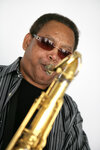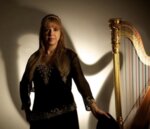Like any small, diverse neighborhood in an old city, the history of Germantown is in many ways defined by its musical footprint.
This item is available in full to subscribers.
We have recently launched a new and improved website. To continue reading, you will need to either log into your subscriber account, or purchase a new subscription.
If you are a digital subscriber with an active subscription, then you already have an account here. Just reset your password if you've not yet logged in to your account on this new site.
If you are a current print subscriber, you can set up a free website account by clicking here.
Otherwise, click here to view your options for subscribing.
Please log in to continue |





Like any small, diverse neighborhood in an old city, the history of Germantown is in many ways defined by its musical footprint. What local doesn’t know about legendary jazz composer Sun Ra, for instance? Or that his previous residence on Morton Street is now a historic landmark?
The Germantown Historical Society has a special spot for Sun Ra in its Hall of Fame, beside Philadelphia bassist Stanley Clarke. But they are certainly not alone. Among the ephemera the Historical Society has collected over the years are hundreds of posters from the 1960s onward, advertising visiting bands coming to perform at local cafés and theaters. According to Historic Germantown’s executive director, Tuomi Forrest, one poster invites would-be concertgoers to see a group called "The Wild Oats." Later, at the height of their fame, they would be known, to most, as Hall & Oates.
With its upcoming “MUSIC Alive” series, Historic Germantown, the partnership of 19 historic destinations and museums in Northwest Philadelphia, aims to highlight music’s important place in the community. The series of six historic concerts, running every second Saturday from May to October, is the brainchild of neighbor and musician Jim Dragoni.
Dragoni has made it his mission to ensure that music is not just Germantown’s past, but its present. The six acts serve as a chronological testament to music that is uniquely American: blues, folk, and jazz. On his inspiration for the series, he says: “I wanted to see what I could put together based on the history of the living artists that are here.”
Dragoni is a staple of the Philadelphia blues and jazz scene, working for many years with high-profile musicians such as the preeminent jazz pianist Mose Allison. It was easy for him to curate this series because of his presence in the world of music; each act was carefully chosen as much for its musical talent as for its capacity to tell a story. Looking through the colorful lineup, it is.
The first show, on May 11, will be with the beloved Roy Book Binder, who spent his youth traveling as a road manager with Reverend Gary Davis; the blind street preacher and expert teacher of guitar. The second show, on June 8, is with the guitarist, “virtuoso” harmonica player, and Vietnam veteran, Saul Broudy. Odean Pope, who Dragoni calls “one of the best saxophone players in the world,” will be performing on July 13. On Aug. 10, the series features Bobby Zankel, whose music can only be described as ultramodern. He’s expected to conduct a group of about six.
Dragoni and his two friends Gloria Galante and Rhenda Fearrington will be performing together on Sept. 14, sharing songs and stories “from encounters we’ve had with major artists.” These “major artists” include John Coltrane, Lionel Richie, Diana Ross, and Frank Sinatra. The last show is on Oct. 12; featuring “Woz,” who plays modern, jazz, fusion and, on occasion, Middle Eastern music. “You’ll hear Miles Davis,” Dragoni said, “You’ll hear belly dance music – all of these things blended together.”
“What I’m interested in is music from across a vast span of time, as opposed to just the music of my own generation,” Dragoni said, “I think that’s what most people do; they get stuck with music that was around when they were young and formulating their initial opinions about life.” His interest lies specifically in American music from the 1920s onward. Perhaps, then, attending to and endorsing these concerts could be seen as a way to stretch our “initial opinions” and preferences in music, with the music that predated and originated the songs we grew up with.
To witness this series is to be allowed a brief window into what and who inspired our inspirations. “Especially when I was younger, I would hear a piece of music and think, 'wow, this is so original!'” Dragoni said, “and then I’d hear a song that was 20 years older and realize where the ideas came from.” In the world of folk, so communal and repetitious, Dragoni said, “I’ve heard the same phrases in multiple folk songs, and none of those people are suing each other. These are ideas that have existed in the collective consciousness and have been reworked to be individual.”
It’s a blurring of musical identity that extends beyond just the sharing of tunes and lyrics. Those who have been on the scene for long also tend to ignore the rigidity of genre. Dragoni retold a story involving Thelonious Monk and Bob Dylan about how, on his first encounter with Monk, Dylan described himself as someone who “played folk music.” As the story goes, Monk replied: “we all play folk music!”
According to Dragoni, Historic Germantown is advertising all over the region. Still, he is most interested in attracting a crowd from the immediate neighborhood. “Sometimes people don’t understand the richness of their own neighborhoods,” he said.